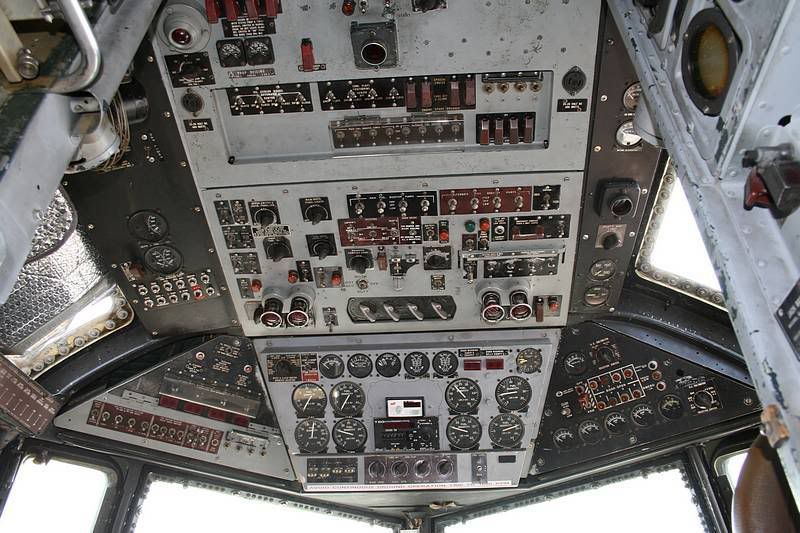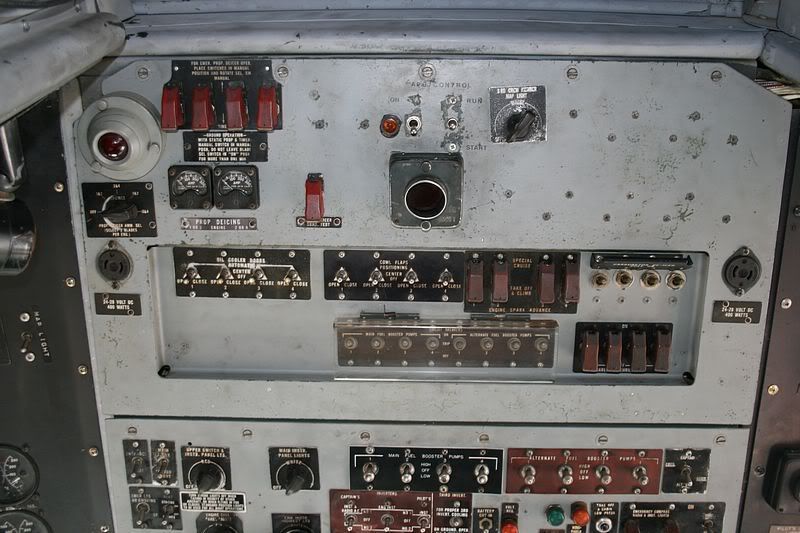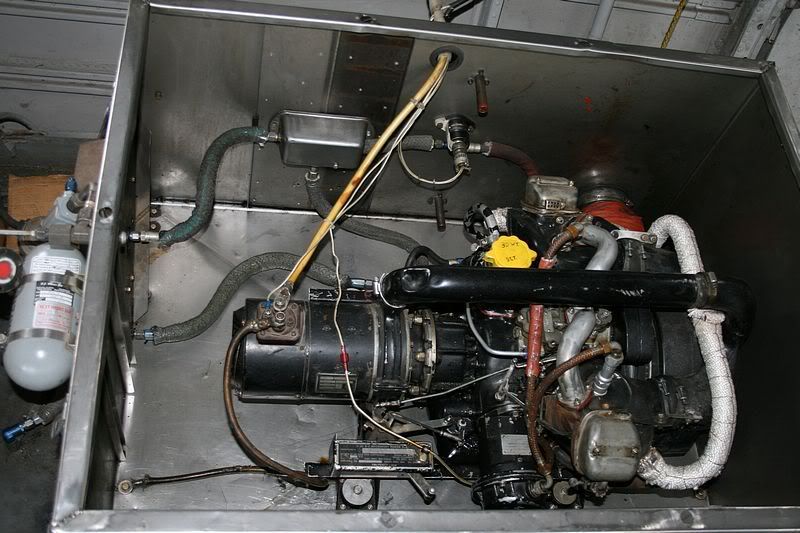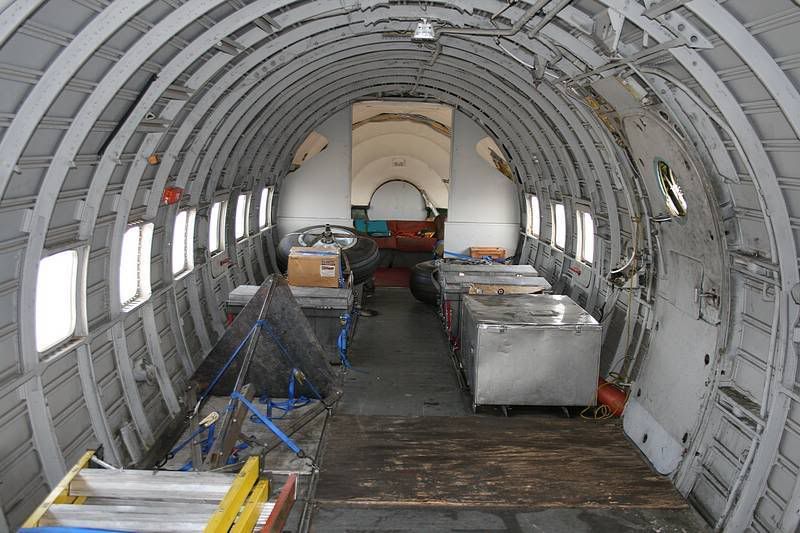Nice picture of T60 Sledge.You have posted some really fine shots of tankers.
Carl,the APU was used for aux power on a large number of military aircraft from B-17 through at least B-36's as well as most large piston engine transports in the USAF through the 1960's.C-124's that didn't have the turbine APU had two of these things.The C-119's that I flew in briefly had this APU,as did TBM's C-123's.On the transports,the controls for the APU,including the choke and throttle were in the cockpit area.
On our DC-7 installations,we have a switch in the cockpit to start the APU and bring the generator on line.We can see if it comes on line with the voltmeter in the Bus position.If you look carefully at the picture of the aft overhead switch panel,you can see the APU Control switches and an amber light just above the black item that looks a bit like a surveillance camera (actually it's a flood light).The three position switch has "Off" in the middle,"Start" in the forward (or down in the picture) position and "Run" in the aft (up) position.The other switch by the amber light is to switch between fuel source #1 or #2,which switches from the left or right wing/tail heater supply.The amber light stays on while the APU is running.It can be started in flight.I sometimes fire it up prior to landing at night as we have a very heavy electrical load with reversing the props and from the landing lights.
It takes a little while to get the APU to light off when it's cold.Since we don't have remote choke or throttle controls,it's set to run at it's goverened speed as soon as it fires up.Once it warms up a bit,we put it on line.In really cold weather,either the pilot or co-pilot will go back to the APU and take the cover of of the box and manually operate the choke and throttle until the engine warms up.We also have a control in the cockpit for the fire extinguisher bottle that's attached to the APU box.You can see the APU box just aft of the rear entrance door in the bottom picture below.
I'll have to take a closeup of the APU dataplate,but it's made by Ranger and is a V-32 D2 Accessory Power Plant.It runs on avgas from the old tail heater system,I believe.Parts are getting rare,but there were many thousands of these units built and Butler bought as many as possible over the years.I'll see if I can get more info in the next day or two on the engine and starter-generator that makes up the APU.











